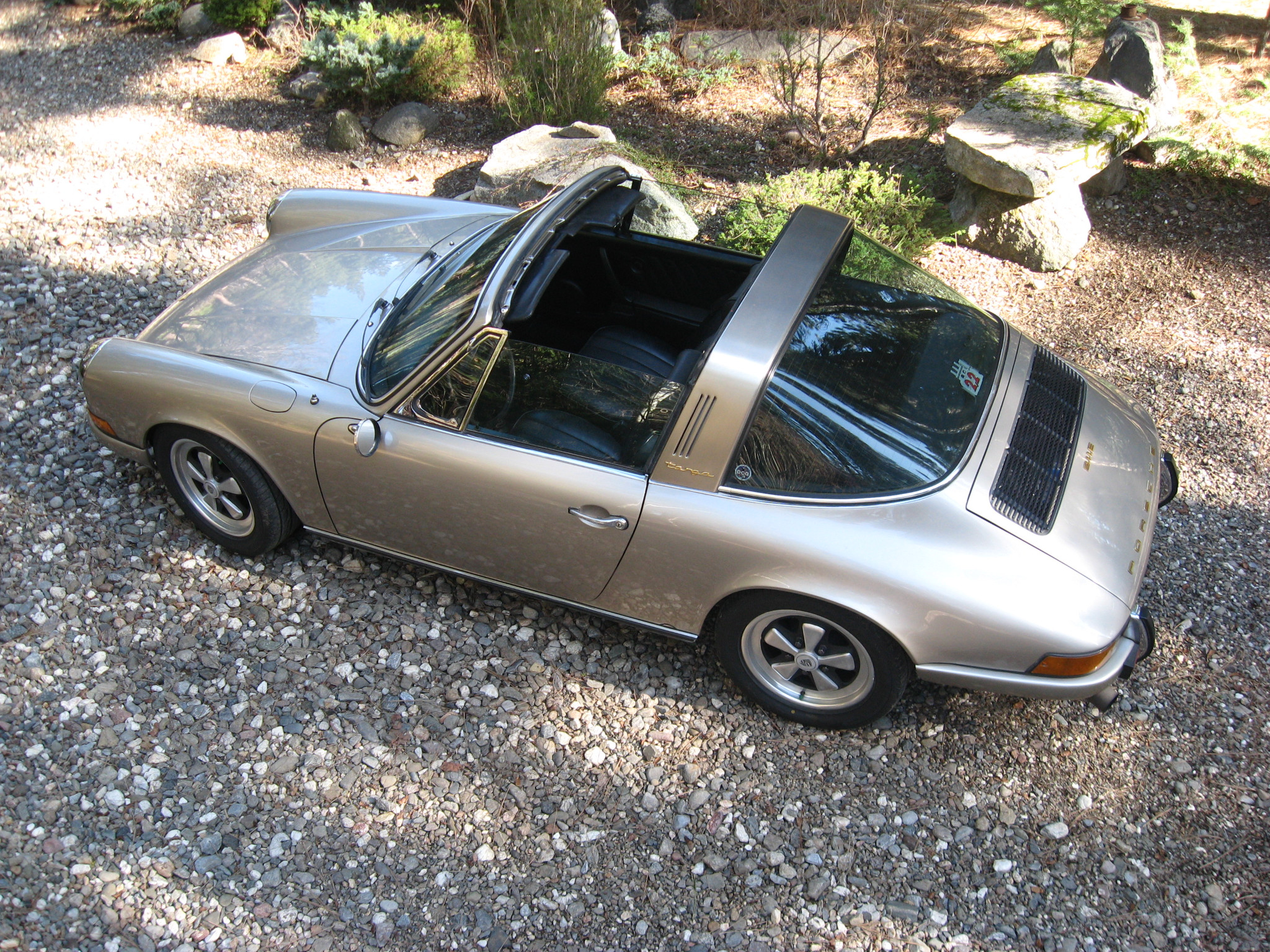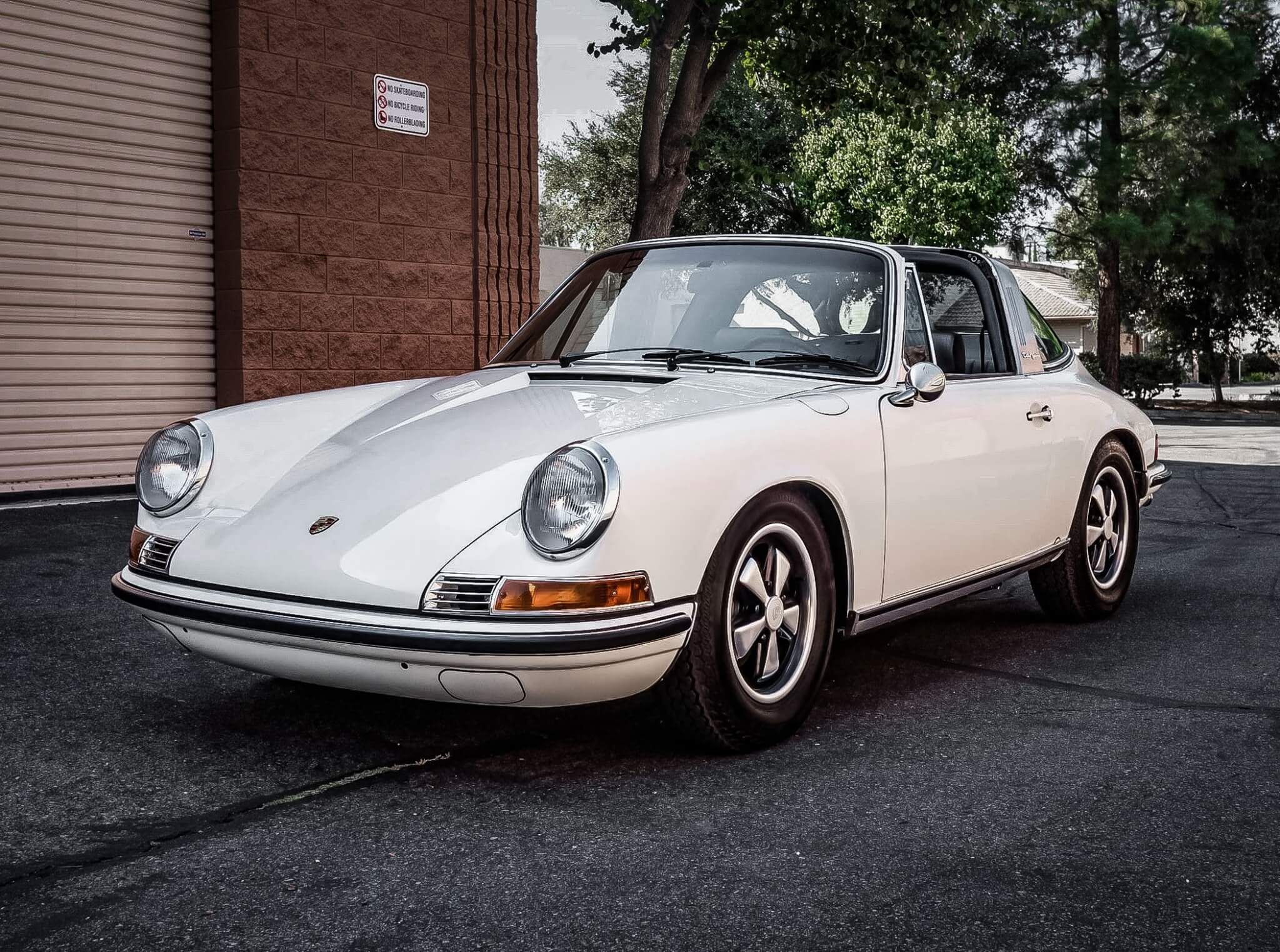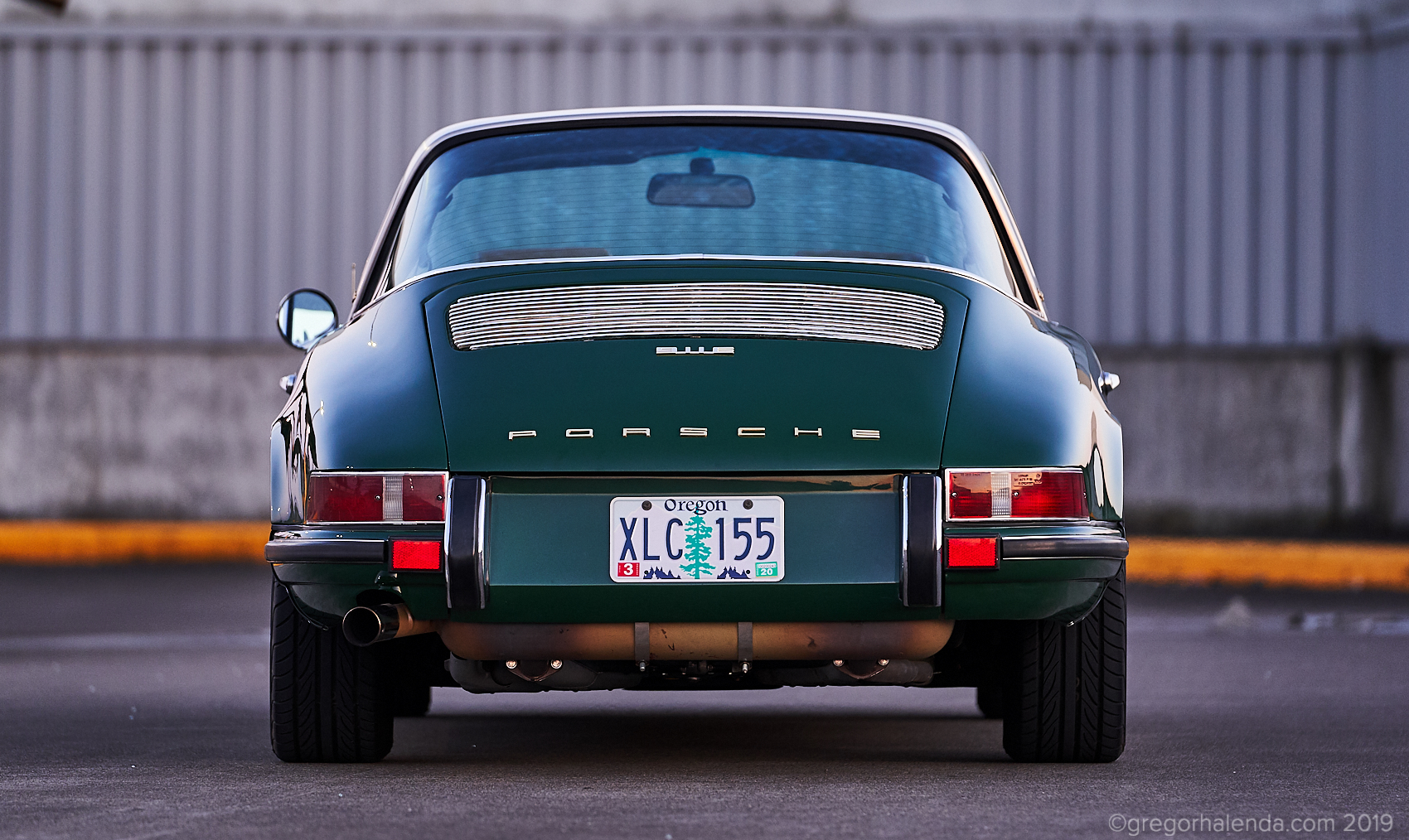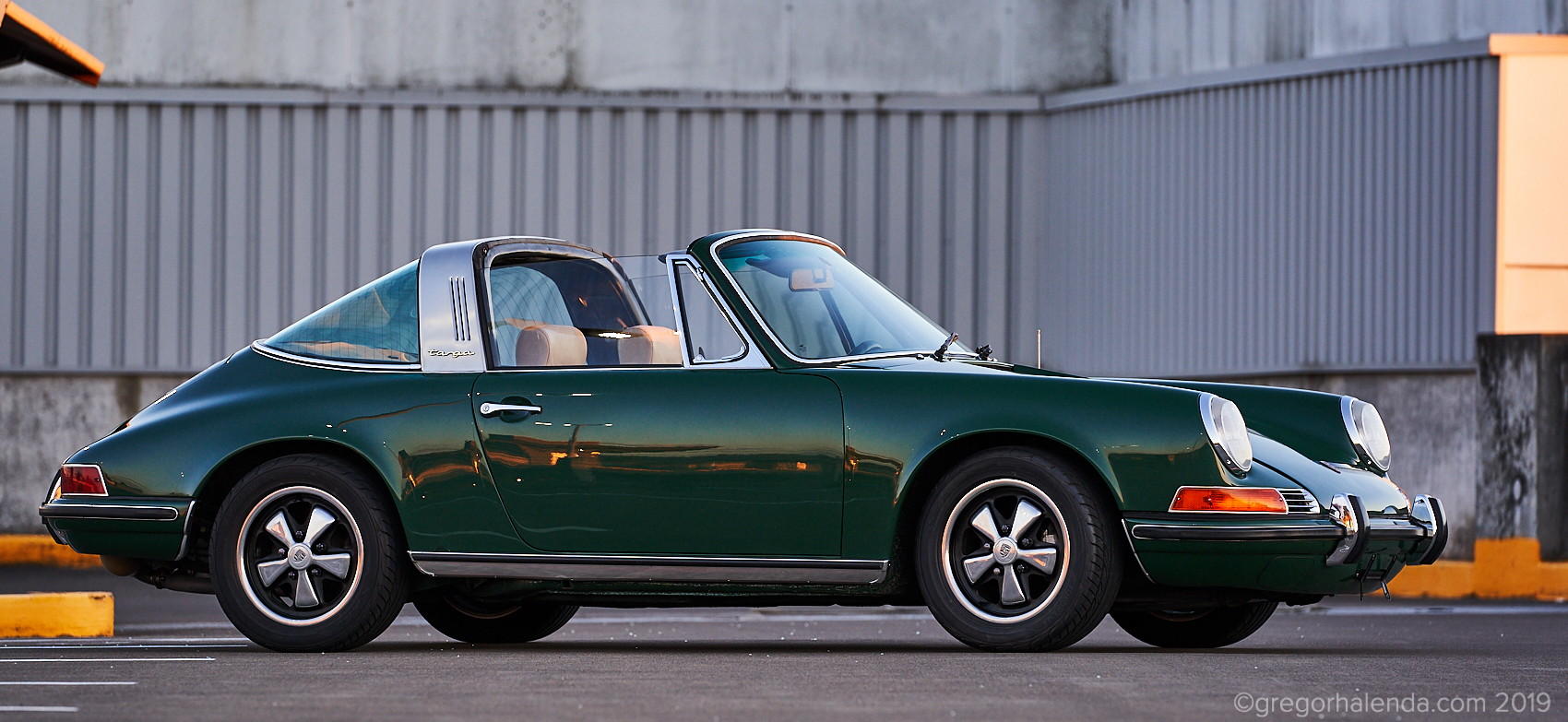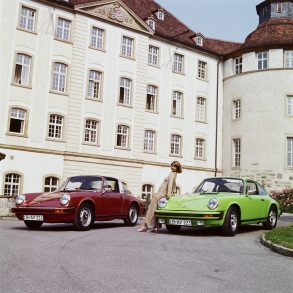1970 – 1971 Porsche 911 E 2.2 (LWB) – Ultimate Guide
The Porsche 911E was the mid-range option in the 911 lineup. It produced 155 bhp and featured all the upgrades that came with C-Series production including longer wheelbase, Fuchs alloy wheels. Both the E and S model 911 had an aluminium engine-lid and aluminium bumpers. The 911 E 2.2 was once again available as either a Coupe or Targa body.
2.2 C-Series (1970)
The biggest change across the 911 variant range for the C-Series was the move to a larger, 2.2-litre flat 6 engine. The 911 E was the midrange in terms of engine and performance. There was the entry level 125 bhp 911 T, the more luxurious 155 bhp 911 E or the sporty 180 bhp 911 S. The engine had single overhead camshafts and dry-sump lubrication and the increase in displacement was thanks to an increase in bore from 80 mm to 84 mm (stroke stayed the same as before at 66mm). It also bigger valves, new head gaskets and more cooling fins.
The 911 E engine had 9.1:1 compression and came with Bosch mechanical fuel-injection. It had softer cams to make it less spikey and more palatable for luxury focused buyers. Overall, power was 155 bhp @ 6200 rpm and torque was 141 ft lbs @ 4500 rpm. Acceleration was decent, with 0 – 60 mph taking 7.6 seconds and the quarter mile taking 15.5 seconds. Top speed was 137 mph.
For these 1970 model year C-series derivatives, the front suspension mounting points were moved 14 mm forward to reduce front wheel castor and lighten the steering at low speeds. The 911 E kept its hydro-pneumatic struts, which made it more comfortable over rough roads. It was a nice compromise.
From the outside you wouldn’t be able to tell the difference with the 911 E 2.0. Upgrades included new door handles and upgraded headlights. A 2.2 decal was applied to the base of the rear screen. To save weight, aluminium was used instead of steel for the engine cover and the central part of the front bumper and the E got anodized gold badging at the back.
A total of 1971 911 E 2.2 Coupes were produced, while the 911 E Targa ended with 933 units made for the 1969 model year.
2.2 D-Series (1971)
US-spec. derivatives now came with a fuel evaporative control system. A heated front windscreen was added to the options list. D-series production ended in August 1971 to make way for the new 2.4-litre E-series variant.
For 1970, there were 1088 911 E 2.2 Coupes and 935 911 E 2.2 Targas produced.








